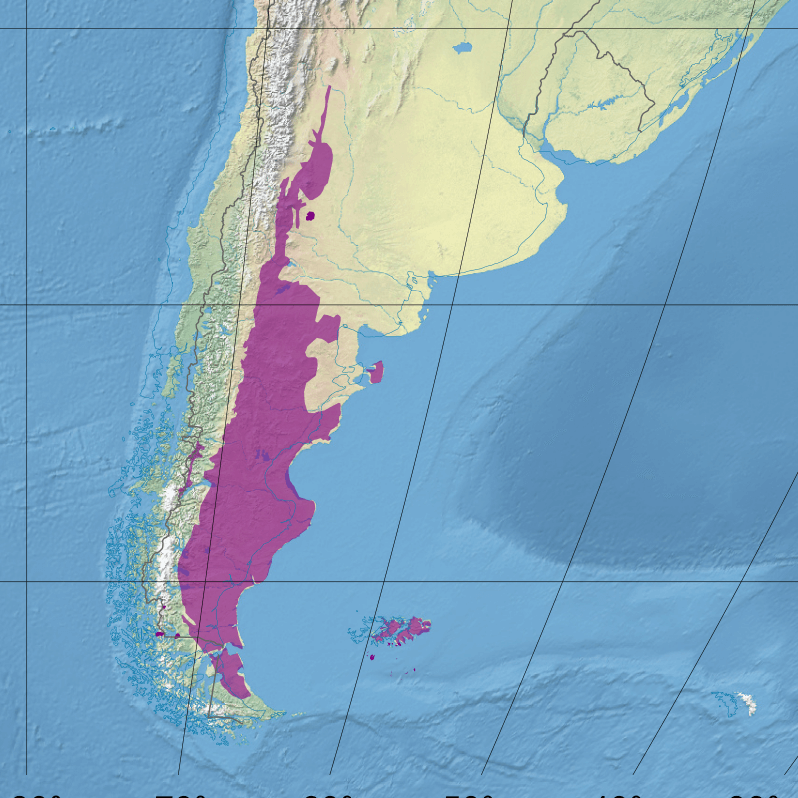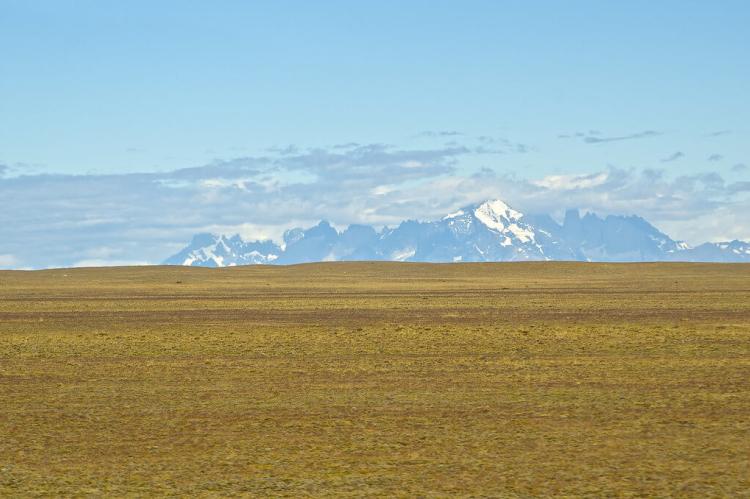The Patagonian Grasslands: Guardians of the Windswept Plains
In the southern reaches of Argentina lies a vast expanse of land known as the Patagonian Grasslands ecoregion, colloquially referred to as the Patagonian Steppe. Embraced by the windswept plains and rugged terrain, it is evidence of the resilience of nature in the face of harsh environmental conditions.
The Patagonian Grasslands
Guardians of the Windswept Plains
Nestled in the southern reaches of Argentina lies a vast expanse of land known as the Patagonian Grasslands ecoregion, colloquially referred to as the Patagonian Steppe. Embraced by windswept plains and rugged terrain, this ecological marvel is a testament to nature's resilience in the face of harsh environmental conditions. Spanning across the Neotropical realm and falling within the temperate grasslands, savannas, and shrublands biome, the Patagonian Grasslands epitomize Argentina's southern landscapes' quintessential beauty and biodiversity.
Geographical Extent
Spanning an impressive 487,000 square kilometers (188,000 square miles) of territory in Argentina and into Chile, the Patagonian Grasslands unfurl across eastern Tierra del Fuego, swathing vast swathes of Argentina's Santa Cruz Province and extending to the Falkland Islands. Windswept plains dominate the landscape, stretching as far as the eye can see, occasionally yielding to rolling hills and dramatic coastal cliffs like those bordering the Valdés Peninsula. Like those in Tierra del Fuego National Park, Pristine wetlands add emerald jewels to this diverse landscape. This crucial transition zone bridges the Patagonian steppe to the north and the Magellanic subpolar forests to the west, showcasing the incredible variety found within Patagonia's southern reaches.
A Land Shaped by Wind and Time
The Patagonian grasslands, formed over millions of years by glacial retreat and wind erosion, lie between the majestic Patagonian Andes and the Atlantic Ocean. This vast expanse encompasses diverse subregions, each with its own character. The northern Monte Desert boasts sparse vegetation and shrublands, transitioning to the more fertile steppe further south. Rolling hills and valleys characterize the central Patagonian plains, while towards the south, windswept Patagonia grasslands give way to the subantarctic steppes.
Adapting to a Challenging Environment
The Patagonian grasslands present a harsh environment with extremes in temperature, limited rainfall, and strong winds. Yet, life thrives here, demonstrating remarkable resilience. Guanacos, graceful camelids resembling llamas, roam the plains, grazing on tough grasses. Burrowing owls hunt rodents hidden beneath the earth, while elusive foxes and pumas stalk their prey amidst the tall grasses. Birds like the lesser rhea and the Patagonian mara add to the avian diversity. Even reptiles like the Patagonian lizard and the endemic Patagonian skink have adapted to this arid region.
Fauna Diversity
The Patagonian Grasslands ecoregion is home to a remarkable variety of animals, some of which are rare or endemic species of birds, mammals, and reptiles. The region is inhabited by iconic creatures such as guanacos, Andean condors, and the South American gray fox, adapting to the region's harsh climatic conditions and scarce vegetation. These animals have found niches within the grasslands and rocky outcrops characteristic of the area. Additionally, the coastal regions of the ecoregion feature important wetlands that provide vital habitats for migratory birds and aquatic species, further enriching the region's biodiversity.
Variety of Vegetation
Although the Patagonian grasslands are mainly covered with grasses, such as tussock and feather bunchgrass, they surprisingly have diverse plant life. There are shrubs like jarilla and creosote bushes that add to the beauty of the landscape and provide shelter and food for the animals. During the short spring season, wildflowers like Calafate and Patagonian poppy bloom, adding vibrant colors to the landscape and making it look like a beautiful tapestry.
Steeped in History
The grasslands of Patagonia have a fascinating human history that dates back several millennia. The Tehuelche and Mapuche people, who lived as nomads, flourished in this area by adapting to the natural rhythm and resources of the land. Their rock art and burial sites tell intriguing stories about their lives and deep connections to this unique ecosystem. Later, European explorers and settlers arrived in the region and impacted its history by engaging in ranching, sheep farming, and resource extraction.
Ecological Significance
The Patagonian grasslands are essential to our planet's health. They serve as carbon sinks, capturing and storing atmospheric carbon dioxide. Their varied topography ensures proper water regulation and drainage, preventing floods and maintaining groundwater reserves. Additionally, they provide crucial grazing land for local communities and support a thriving tourism industry.
Environmental Challenges
The Patagonian Grasslands are of great ecological significance, but they face various threats, the most significant of which is overgrazing. In the past, intensive grazing practices have led to soil degradation and desertification, endangering this fragile ecosystem's delicate balance. Furthermore, converting natural grasslands for agricultural purposes worsens the situation, fragmenting habitat and displacing native species.
Climate change is also posing a significant threat to the Patagonian Grasslands. Rising temperatures and changing precipitation patterns are altering the region's ecological dynamics, which is a cause for concern. Fortunately, concerted efforts are underway to promote sustainable grazing practices and habitat restoration initiatives to mitigate the impacts of human activities on the grasslands.
Conclusion
The Patagonian grasslands are not just vast plains swept by winds. They are an ecosystem of diverse life and rich history that faces significant challenges. We must recognize this land's ecological importance and cultural heritage and take responsibility for its conservation for future generations. By understanding and appreciating its uniqueness, we can work towards a future where wind, grass, and life continue to thrive in harmony throughout the Patagonian landscape.
The Patagonian Grasslands ecoregion is a testament to the resilience and biodiversity of Argentina's southern landscapes. Despite significant environmental challenges, this windswept land continues to support diverse flora and fauna, each intricately woven into the fabric of its unique ecosystem. As caretakers of the land, we must implement sustainable conservation strategies to ensure the long-term survival of this precious wilderness. This will preserve it for future generations to cherish and explore.

Map depicting the location of the Patagonian Grasslands ecoregion (in purple).
